|
|
Tom and Huck’s Tree House on Tom Sawyer Island |
||
|
|
|||
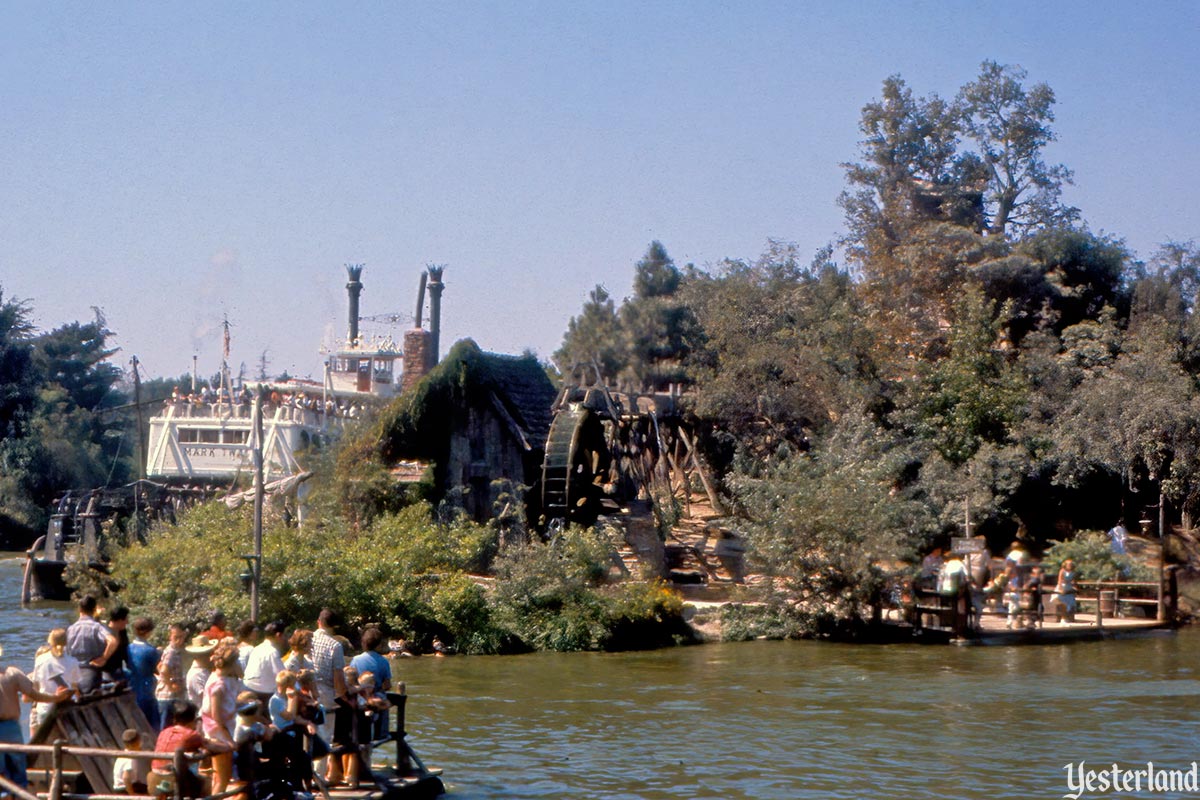
Photo by Marion Caswell, 1960, courtesy Dennis Caswell Tom and Huck’s Tree House (upper right), the highest landmark on Tom Sawyer Island |
|||
|
Take a look at your Tom Sawyer Island map brochure from 1957: |
|||
|
|
Tom and Huck’s Tree House |
||
|
It’s not just the highest point on the island. According to the 1957 map brochure, it’s the “highest point in Disneyland.” |
|||
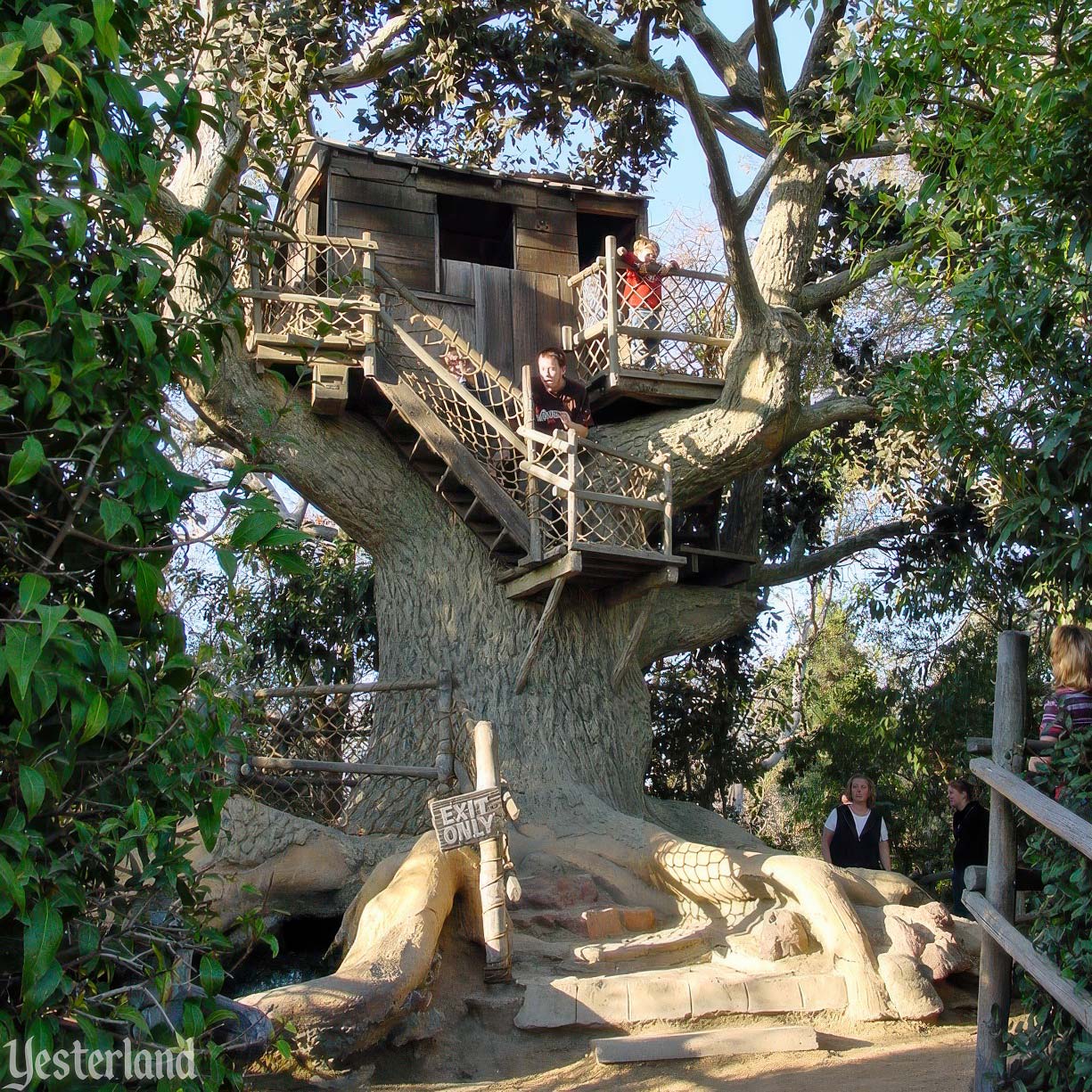
Photo by Allen Huffman, 2002 Children can pretend to be Tom and Huck |
|||
|
Now it’s your turn to climb this landmark. You’ve taken a raft to the island. Follow the signs and look for the opening in the bottom of a tree. If you have kids with you, don’t tell them this tree isn’t real. It’s a concrete tree with plastic leaves (or no leaves, depending on when you visit). |
|||
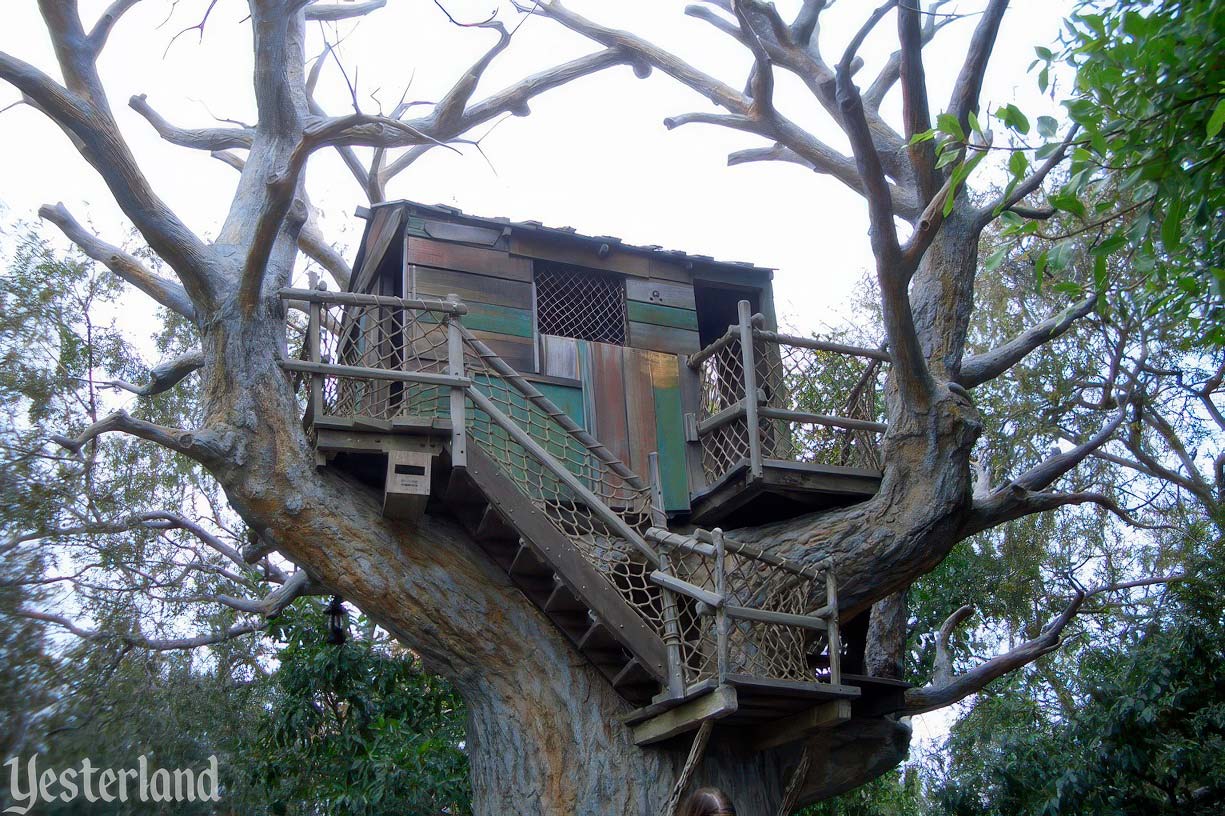
Photo by Allen Huffman, 2003 Hole on the side of the trunk at the landing for the stairs |
|||
|
Inside the tree trunk, there’s a ladder. Not a stairway, just a ladder. Climb up. You emerge from a rather small hole in the side of the trunk. To fit through, it’s good to be a child or an agile adult. There are stairs the rest of the way up. |
|||
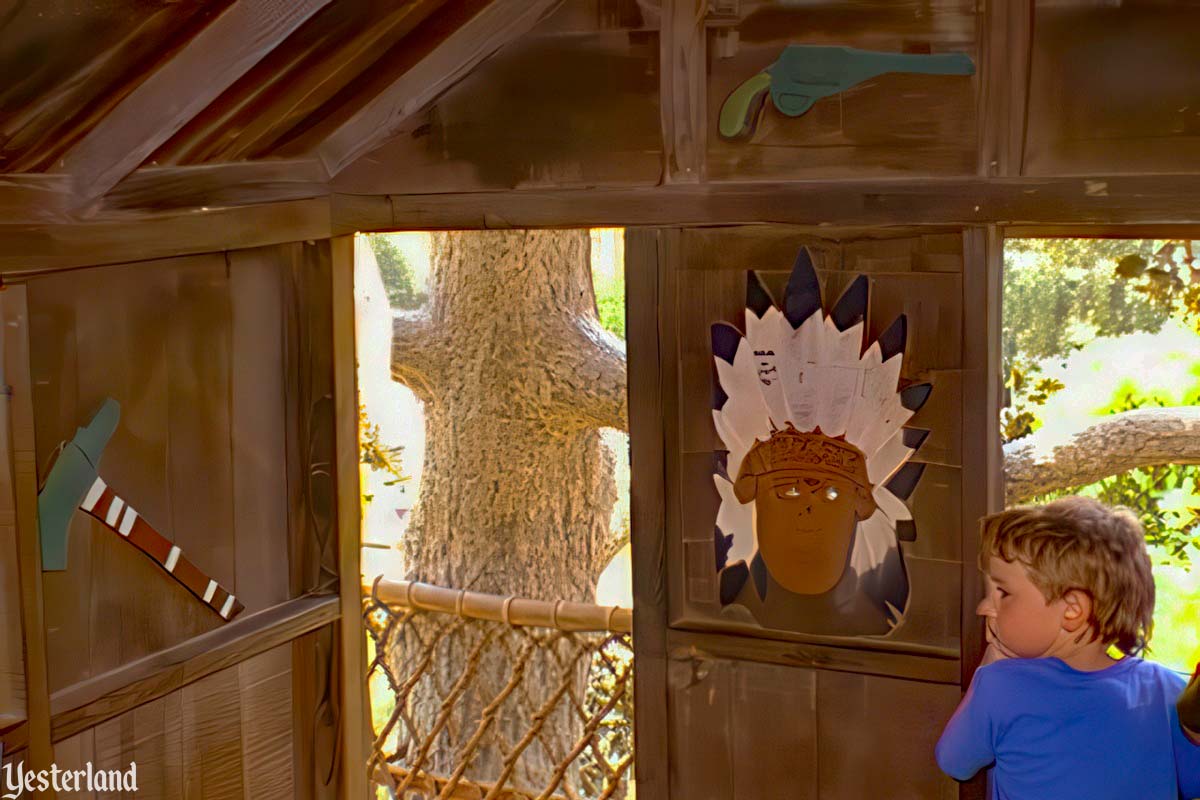
Photo by Allen Huffman, 1997 Inside, with pictures of weapons |
|||
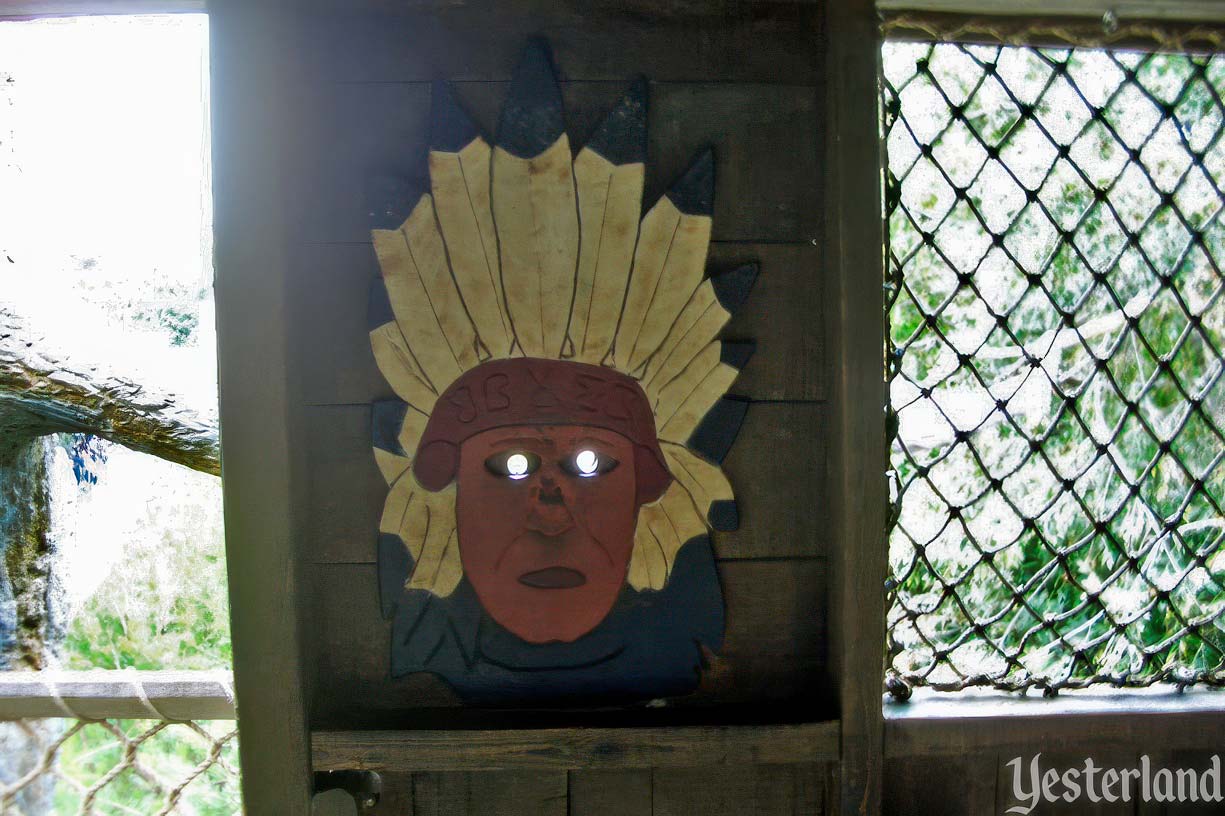
Photo by Allen Huffman, 2003 Gaze through the eye holes |
|||
|
You’ve arrived! Enjoy the views. Think about how great it would be to have a treehouse like this of your own. Ready to leave? Don’t worry about going down the ladder. Tom and Huck built their arboreal abode with a one-way path to handle a lot of guests. There are stairs on the outside of the tree for your descent. |
|||
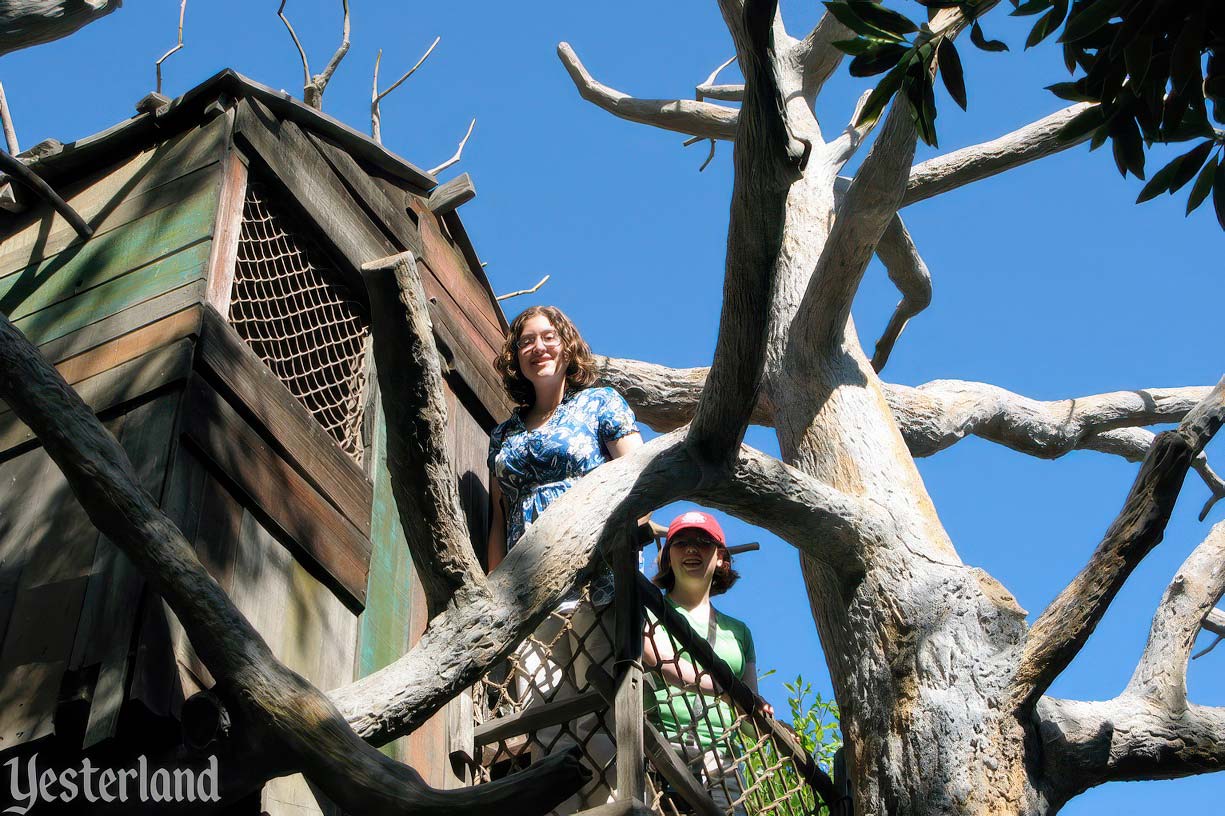
Photo by Werner Weiss, 2007 Emerging from the house in the tree |
|||
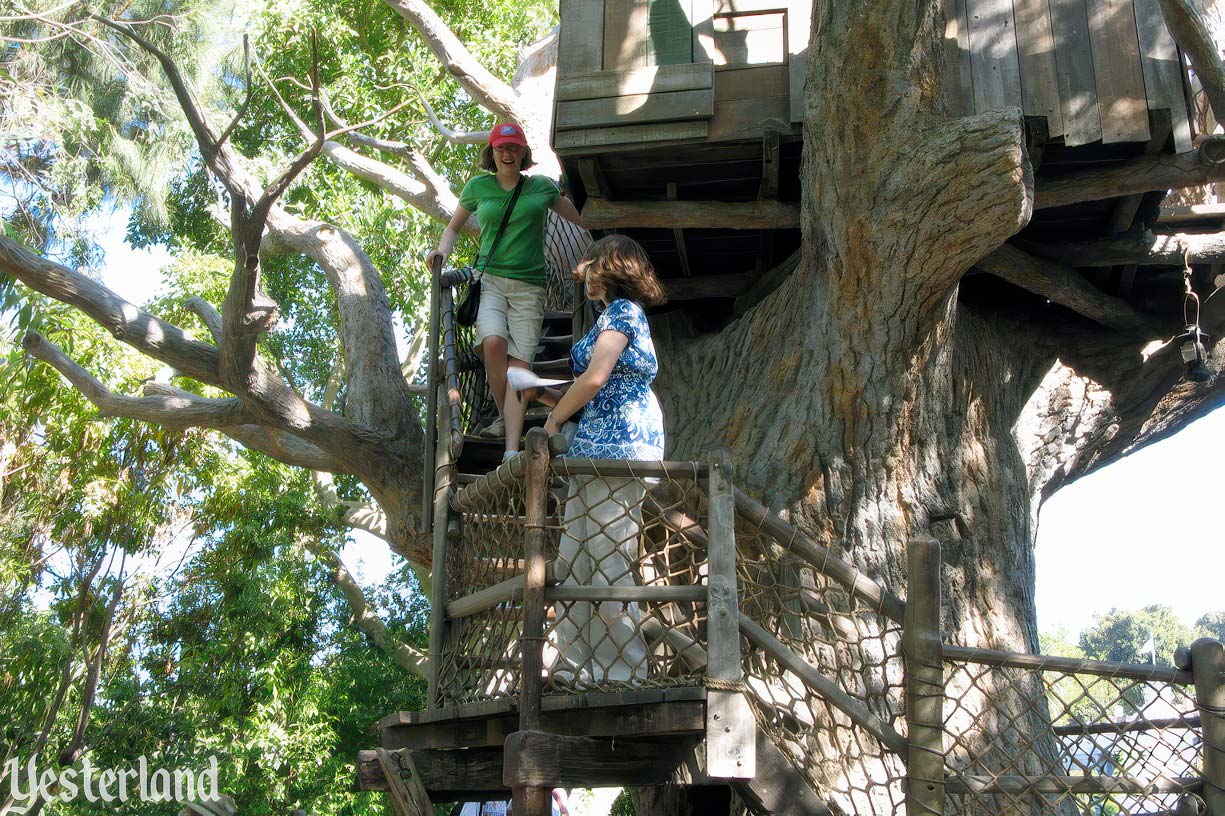
Photo by Werner Weiss, 2007 Descending on the exit stairs |
|||
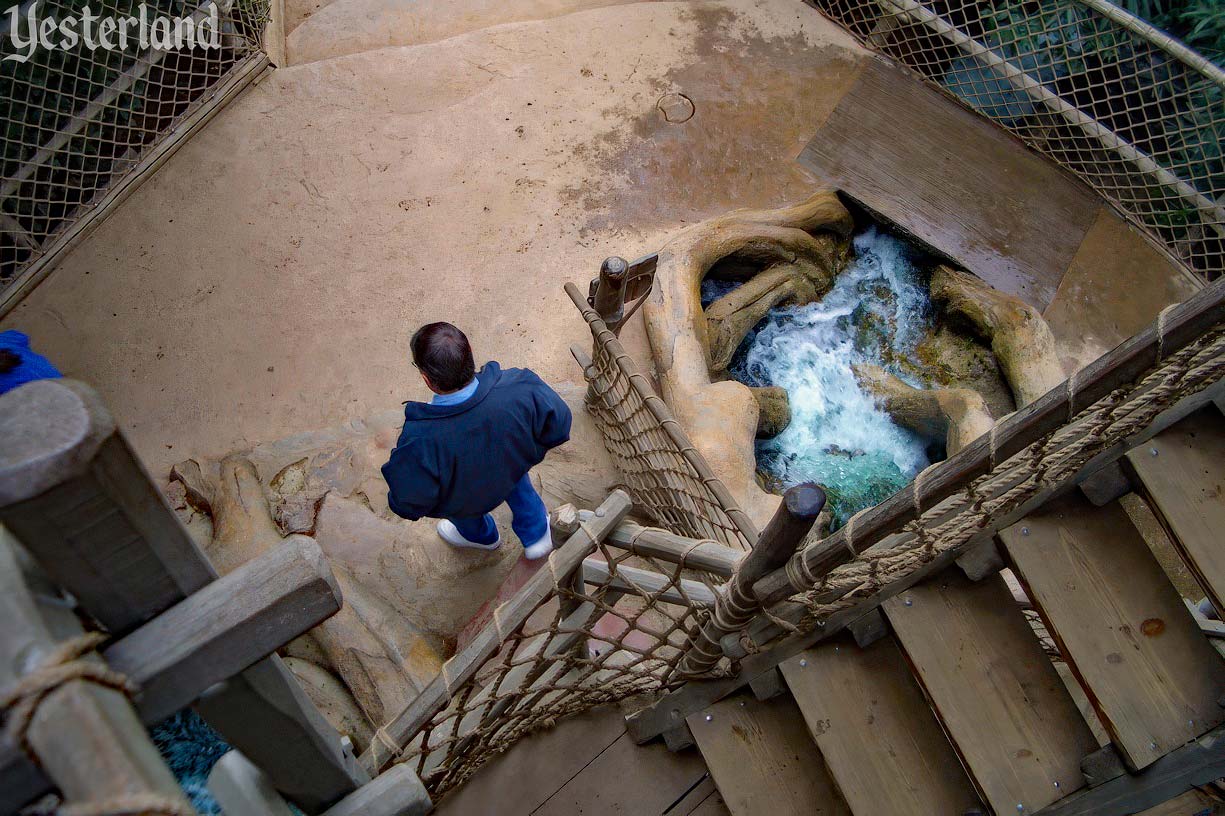
Photo by Allen Huffman, 2003 Back on the ground |
|||
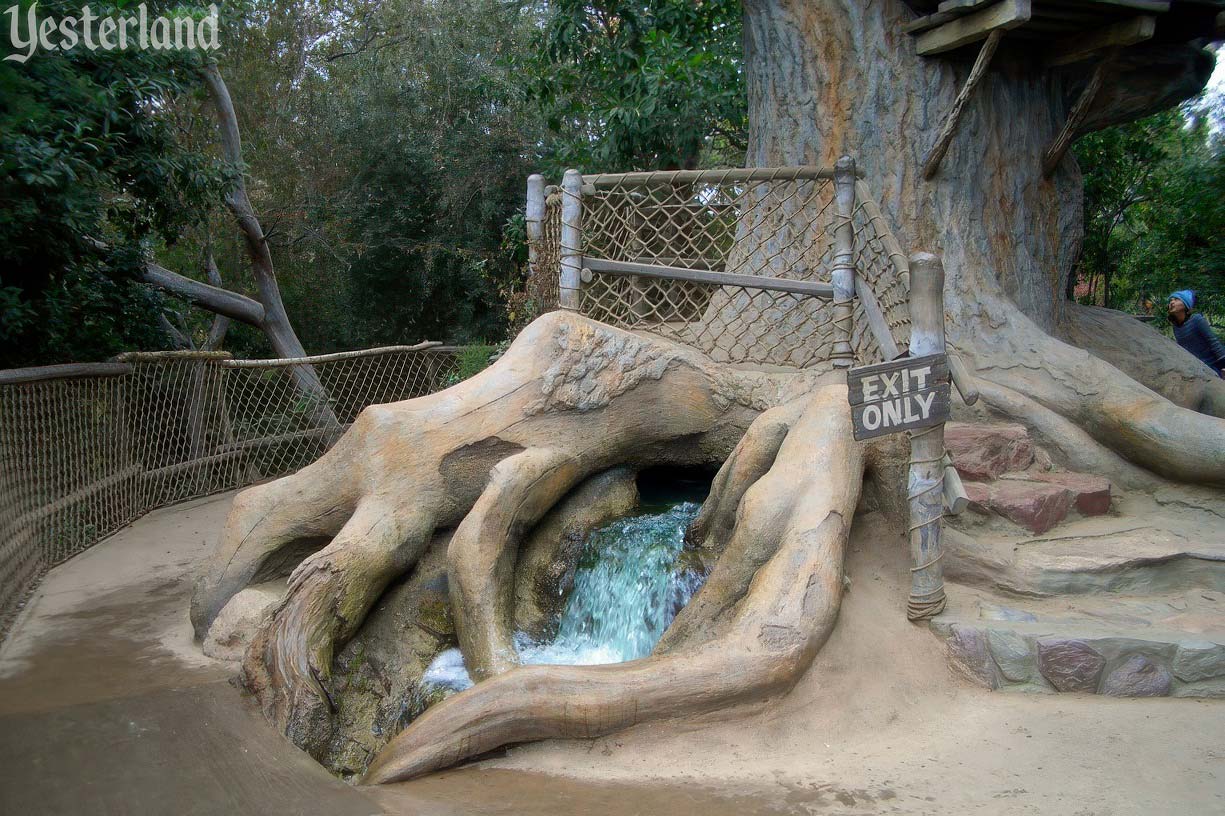
Photo by Allen Huffman, 2003 Headwaters of the Rivers of America |
|||
|
Pretty cool, eh? Before you go further, admire the three little waterfalls flowing from the roots. They form three streams going three directions. One of them powers the waterwheel at the Old Mill. |
|||
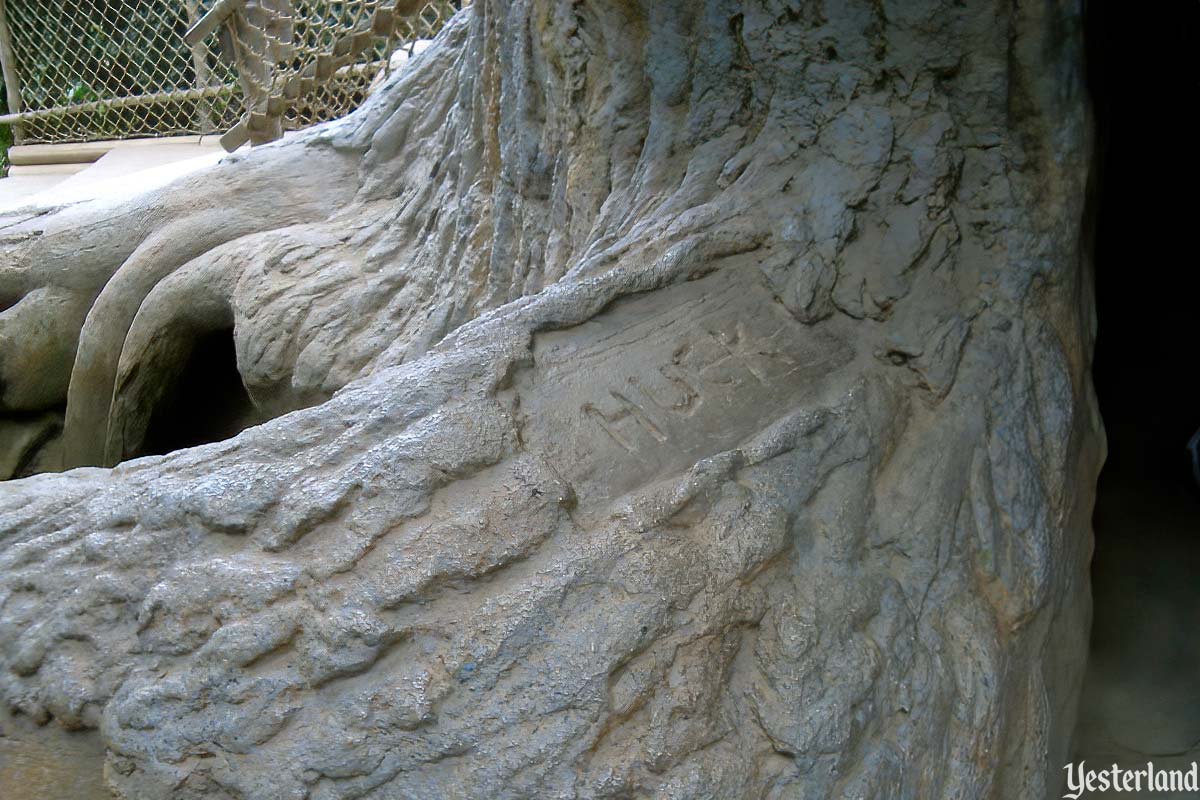
Photo by Allen Huffman, 2003 Vandalism? |
|||
|
Don’t you just hate when someone scrapes bark off a tree and carves into the wood? How inappropriate! Oh. Wait a minute. This one was done by Huck. Elsewhere on the tree, there’s a heart-shaped piece of bark missing with the carved names Tom and Becky. Those seem appropriate here. |
|||
|
|
|||
|
|
|||
|
Tom Sawyer Island opened within the first year of operations at Disneyland Park — but just barely. Guests at the park’s “International Press Preview” on July 17, 1955 and at its public opening the next day could ride the Mark Twain riverboat around an uninhabited, unreachable, undeveloped island. Without the island, the Rivers of America would have been a lake, not a looping river On July 16, 1956, Tom Sawyer Island Rafts began welcoming guests. The island had been transformed into a collection of attractions — various caves, the Old Mill, the Suspension Bridge, and Fort Wilderness — for guests of all ages to explore. Walt Disney personally designed Tom Sawyer Island. Guests needed to use a “D” ticket for Tom Sawyer Island Rafts. That was the highest denomination. When the “E” ticket was introduced in 1959 as the new highest denomination, the Tom Sawyer Island Rafts were moved up to that tier. In 1956, there was no Tom and Huck’s Tree House. At its future location, the island map brochure showed “The Falls and Lookout Point” with this description: “From this point emanate 3 waterfalls, the headwaters of the Rivers of America… far below streams the river traffic of keel boats, sternwheeler and Indian war canoes.” |
|||
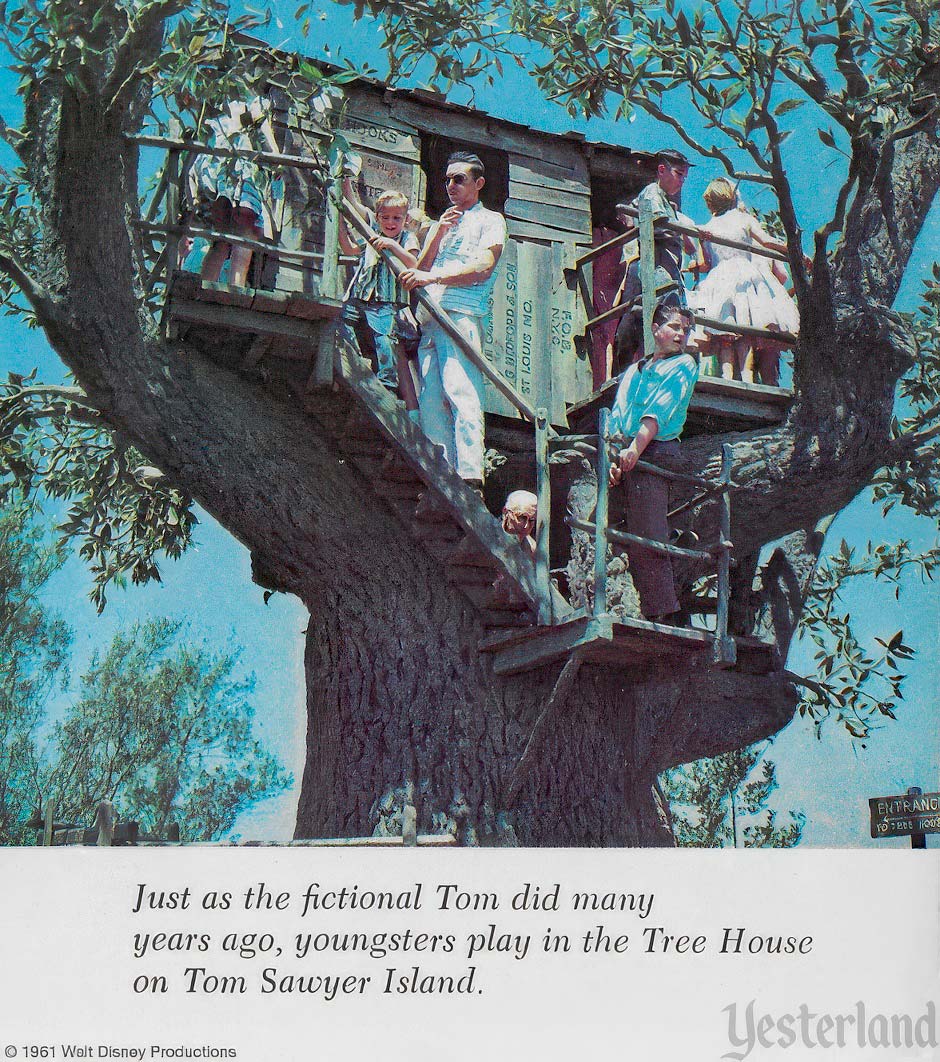
© Walt Disney Productions Photo in Walt Disney’s Guide to Disneyland 1961 edition |
|||
|
Tom and Huck’s Tree House was added to Tom Sawyer Island in 1957, along with the Pontoon Bridge and Castle Rock Ridge. Originally, Tom and Huck’s Tree House did not have rope netting to keep guests from falling. Guests survived (including the future Curator of Yesterland, who remembers visiting all the attractions of Tom Sawyer Island as a small child in 1958). Apparently, at some point, Disney management (or Disney lawyers) decided rope netting was needed. Okay. Safety is important. With the 1959 opening of Matterhorn Bobsleds, Tom and Huck’s Tree House was no longer the highest point in Disneyland. As the real trees surrounding the treehouse continued to grow, it became less of a landmark. In 1962, another treehouse opened across in Adventureland. The Swiss Family Treehouse took the idea of a faux tree with faux leaves to another level. in 2007, Tom Sawyer Island received some overdue attention, but it didn’t involve restoration and enhancements based on the original Tom Sawyer theme. Instead, the island became Pirate’s Lair on Tom Sawyer Island. It was an odd juxtaposition of the original theme and Disney’s Pirates of the Caribbean movie franchise. The Tree House gained a few permanently mounted spyglasses, but not much else changed. In early 2013, Tom and Huck’s Tree House closed as part of a parkwide safety review. Perhaps the rope netting wasn’t enough. The closing was supposed to be temporary, but in September 2013, Disney journalist David Koenig reported that it had become permanent. |
|||
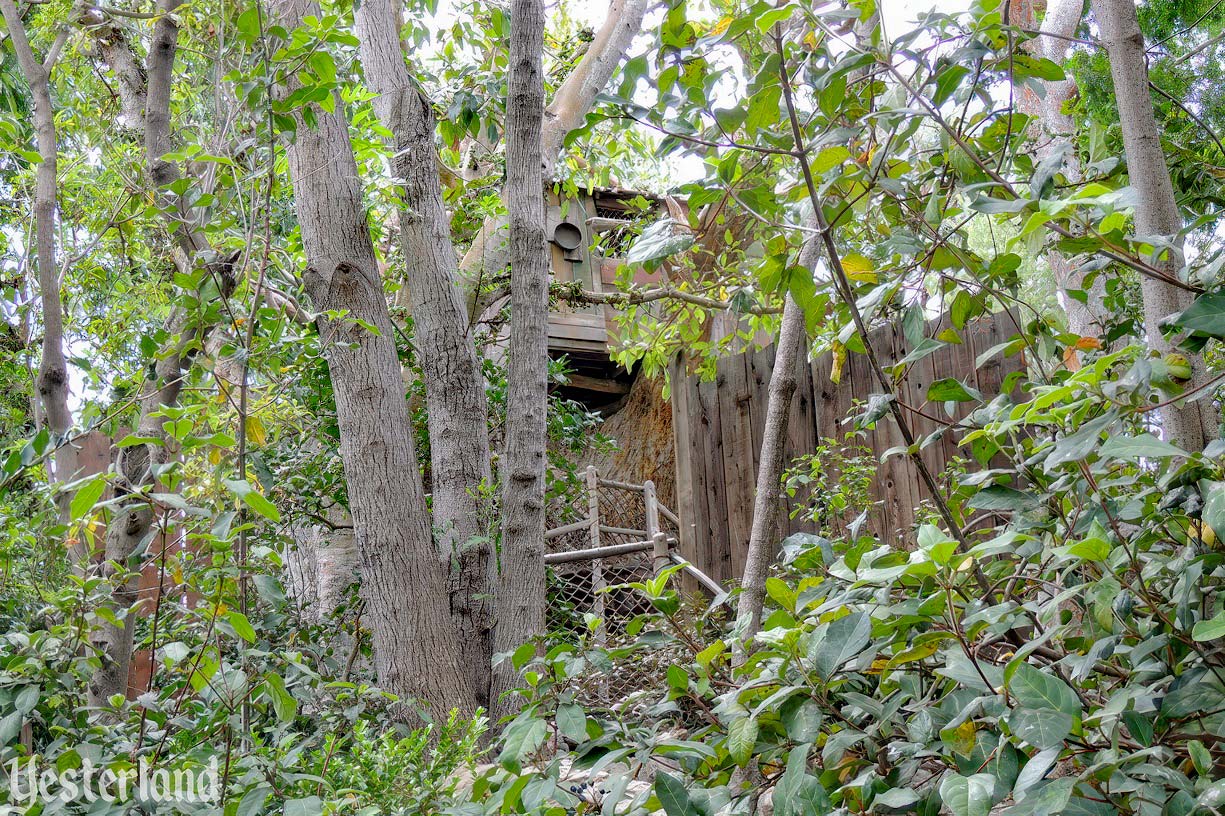
Photo by Werner Weiss, 2015 Tom and Huck’s Tree House, if you knew where to look |
|||
|
The rumor in 2015 was that Tom and Huck’s Tree House would be demolished. That never happened. Instead, it was allowed to be obscured by the surrounding trees, hiding it from guests unless they were looking for it. It was cheaper than demolition. |
|||
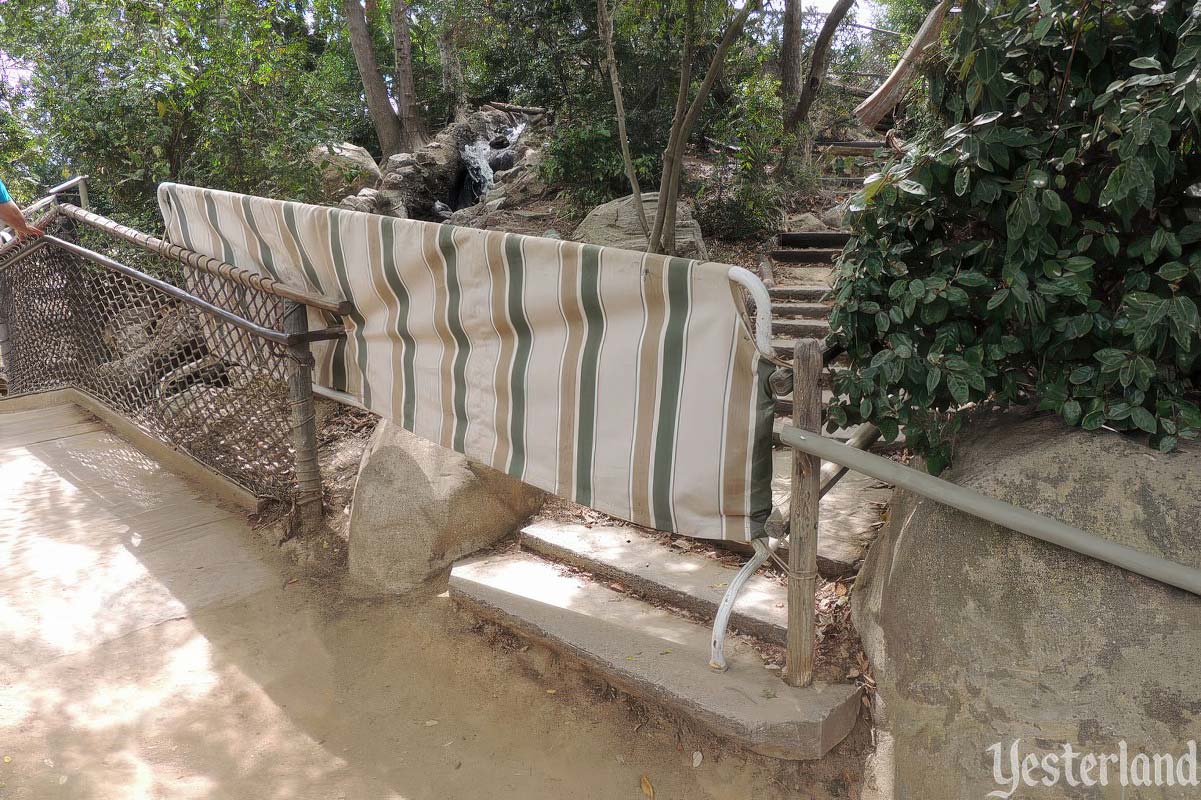
Photo by Werner Weiss, 2015 “Temporary” barrier blocking the path to the tree trunk entrance, April 2015 |
|||
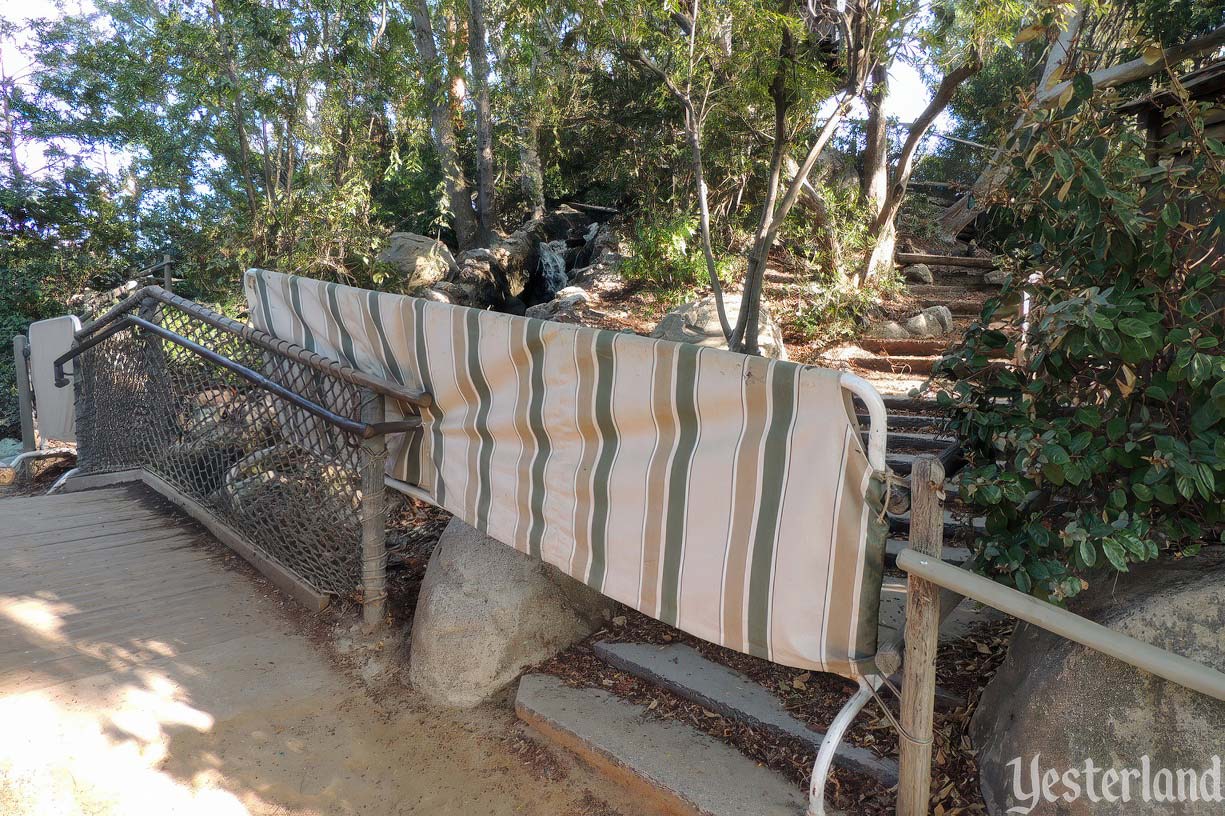
Photo by Werner Weiss, 2015 “Temporary” barrier still blocking the path to the tree trunk entrance, September 2015 |
|||
|
Although temporary barriers detract from storytelling, they’re sometimes necessary, even at the best theme parks. But the barriers at Tom and Huck’s were up way too long. Tom Sawyer Island was long past its prime at this point. There was less for kids to do. Teeter-Totter Rock, Merry-Go-Round Rock, and the original Fort Wilderness were gone too. They were not replaced with new features that were equally fun and appropriate to the theme, while complying with 21st century safety standards. The props and effects added for Pirate’s Lair had seen better days too. |
|||
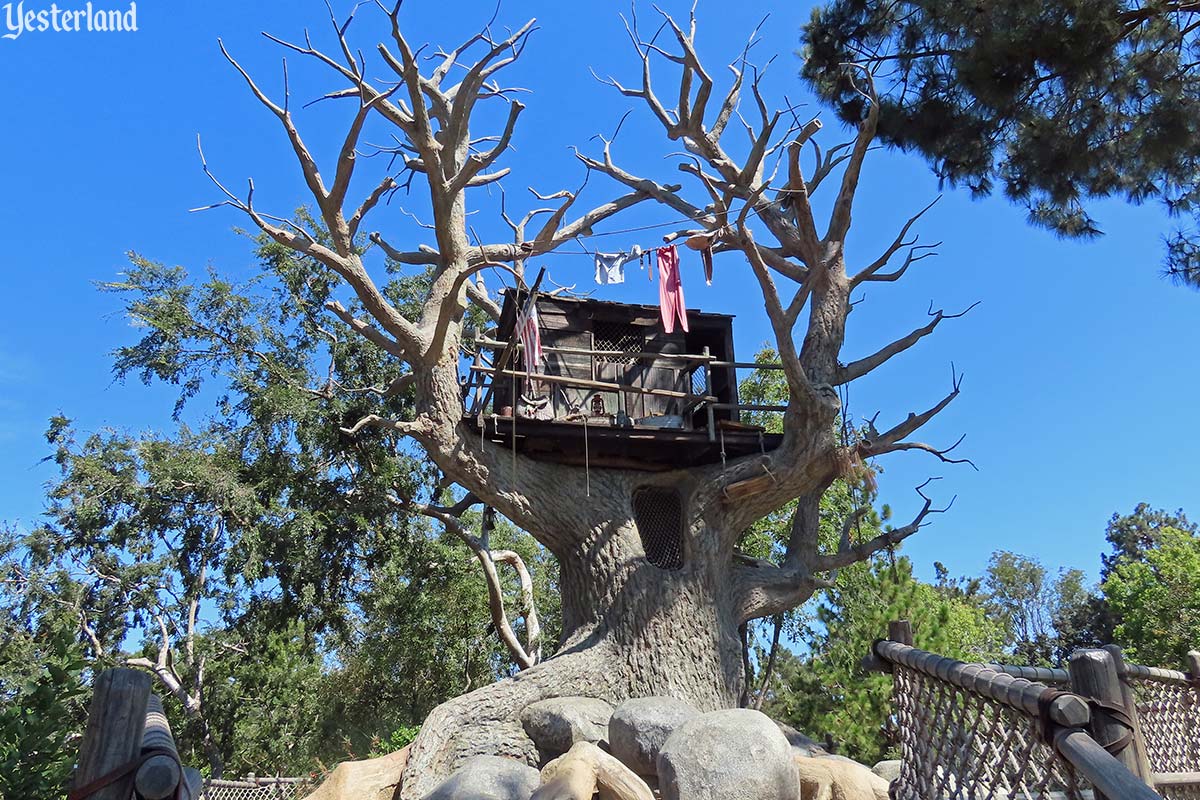
Photo by Chris Bales, 2024 Looking better in 2024 than in 2015, but in need of attention |
|||
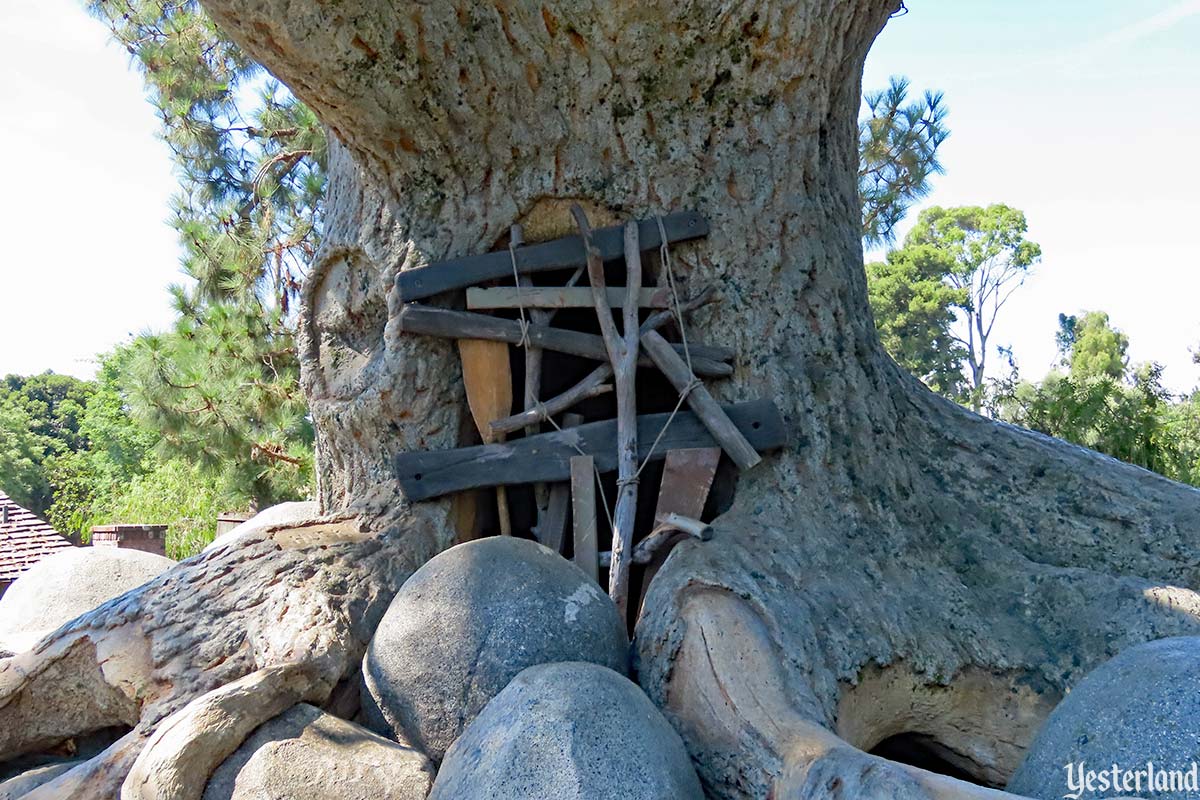
Photo by Chris Bales, 2024 Tree trunk entrance blocked with boulders and various types of wood |
|||
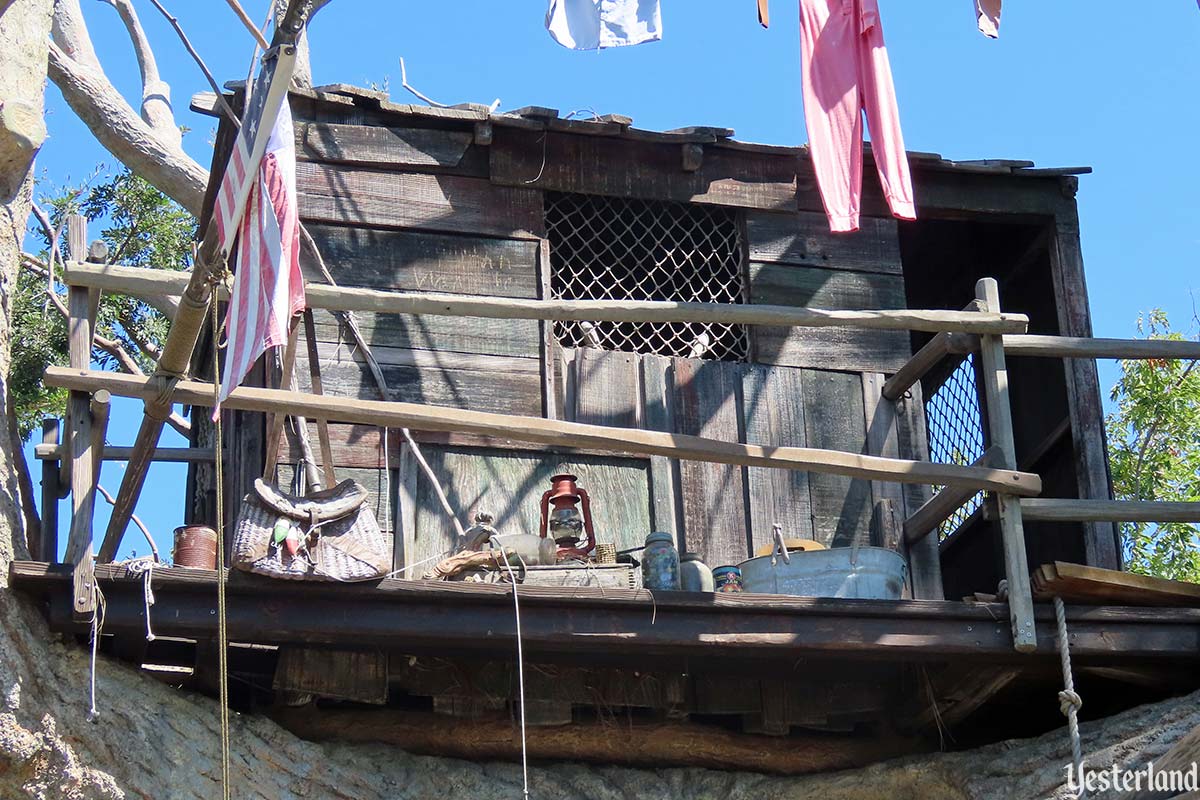
Photo by Chris Bales, 2024 Faded banner based on a 19th century American flag, along with faded laundry |
|||
|
Disneyland pruned its Frontierland forests in 2016, with many mature trees transplanted to Star Wars: Galaxy’s Edge. Tom and Huck’s Tree House became something guests could see, but not enter. It was dressed up to look as if someone lives in a dead tree. This article ends with a recent photo of Tom and Huck’s Tree House looking absolutely great! It’s impeccably maintained. Guests are on the stairs, enjoying the experience, just like Disneyland guests in 1957. The faux tree looks real, with lifelike artificial leaves all in place. |
|||
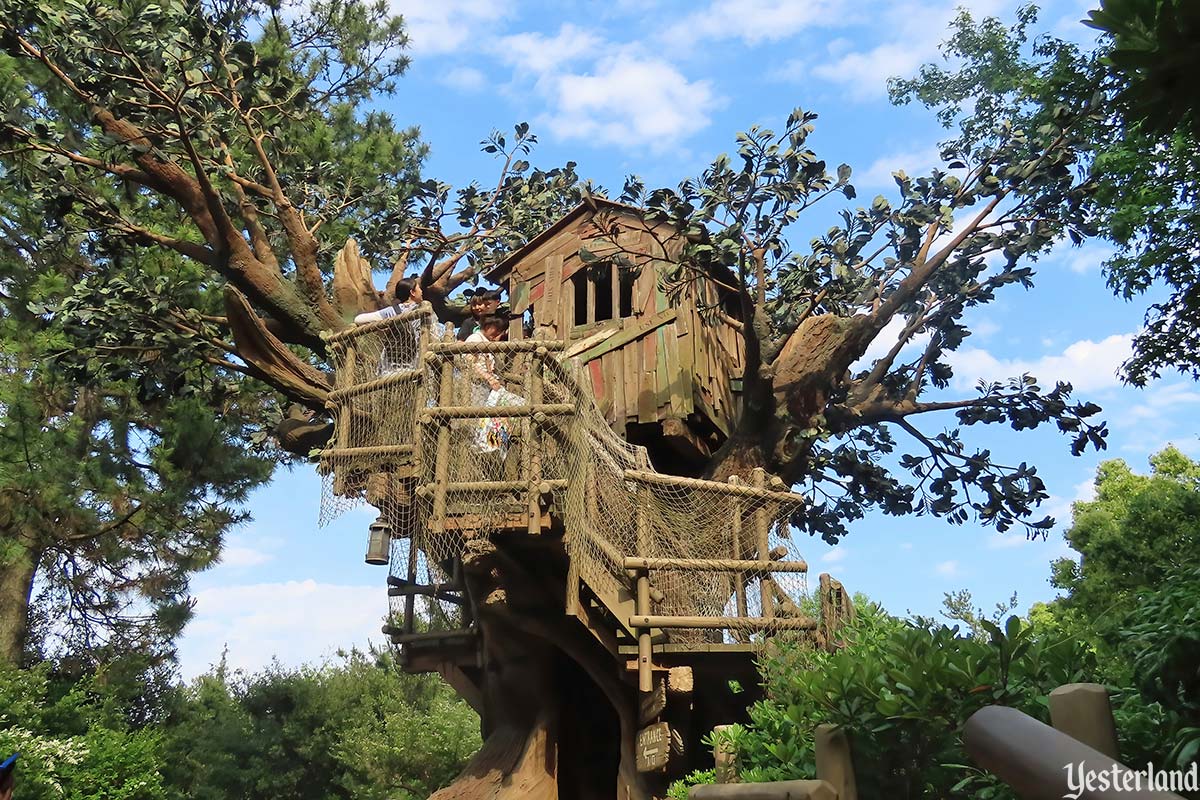
Photo by Chris Bales, 2024 Is this really Tom and Huck’s Tree House in 2024? |
|||
|
Yes. The photo is real. It was taken at Disneyland in May 2024… but not the one in California. There’s a Tom Sawyer Island in Westernland at Tokyo Disneyland. So if you’re an American who wants to visit Tom Sawyer Island as it should be, you’ll need to buy an airline ticket to Tokyo. Strangely, Tom Sawyer Island at Magic Kingdom Park in Florida never had a treehouse. Based on an announcement at D23 2024 in August 2024, the park soon won’t have a Tom Sawyer Island at all. But that’s another story for another time. |
|||
|
|
|||
|
|
Click here to post comments at MiceChat about this article.
© 2024 Werner Weiss — Disclaimers, Copyright, and Trademarks Updated August 23, 2024 |
||